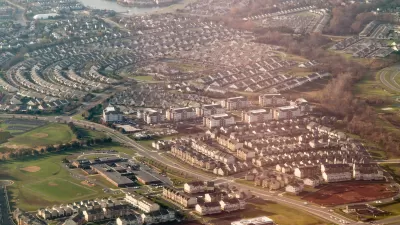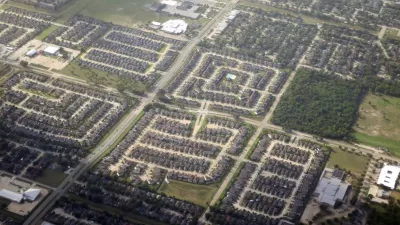As America's beloved shopping mall enters its "golden years", Emily Badger considers the astounding anti-suburban ethos of its inventor, and what the future has in store for this "over the hill" retail development model.
Vienna-born architect Victor Gruen outlined his vision for the enclosed shopping mall in 1952, sparking Americans' decades-long love affair with that perfect combination of retail shopping, food courts and air conditioning. However, as shopping malls in America seem destined for "retirement", it's interesting to note Gruen's actual ideology: "He hated suburbia. He thought his ideas would revitalize cities. He wanted to bring urban density to the suburbs. And he envisioned shopping malls as our best chance at containing sprawl," writes Badger.
Now the mall's prolific run seems to be coming to a close. "At the mall's peak popularity, in 1990, America opened 19 of them. But we haven't cut the ribbon on a new one since 2006," claims Badger. Development of new malls and supporting infrastructure like highways seem to have reached a plateau. Georgia Tech professor Ellen Dunham-Jones and author of the book Retrofitting Suburbia, "estimates that more than 40 malls nationwide have been targeted for significant redevelopment. And she can count 29 that have already been repurposed, or that have construction underway."
In an ironic twist, it appears as though the evolution of the mall into the multi-use "lifestyle center" could, in fact, bring Gruen's vision of transporting urban density to the suburbs closer to fruition.
FULL STORY: The Shopping Mall Turns 60 (and Prepares to Retire)

Alabama: Trump Terminates Settlements for Black Communities Harmed By Raw Sewage
Trump deemed the landmark civil rights agreement “illegal DEI and environmental justice policy.”

Planetizen Federal Action Tracker
A weekly monitor of how Trump’s orders and actions are impacting planners and planning in America.

The 120 Year Old Tiny Home Villages That Sheltered San Francisco’s Earthquake Refugees
More than a century ago, San Francisco mobilized to house thousands of residents displaced by the 1906 earthquake. Could their strategy offer a model for the present?

In Both Crashes and Crime, Public Transportation is Far Safer than Driving
Contrary to popular assumptions, public transportation has far lower crash and crime rates than automobile travel. For safer communities, improve and encourage transit travel.

Report: Zoning Reforms Should Complement Nashville’s Ambitious Transit Plan
Without reform, restrictive zoning codes will limit the impact of the city’s planned transit expansion and could exclude some of the residents who depend on transit the most.

Judge Orders Release of Frozen IRA, IIJA Funding
The decision is a victory for environmental groups who charged that freezing funds for critical infrastructure and disaster response programs caused “real and irreparable harm” to communities.
Urban Design for Planners 1: Software Tools
This six-course series explores essential urban design concepts using open source software and equips planners with the tools they need to participate fully in the urban design process.
Planning for Universal Design
Learn the tools for implementing Universal Design in planning regulations.
Clanton & Associates, Inc.
Jessamine County Fiscal Court
Institute for Housing and Urban Development Studies (IHS)
City of Grandview
Harvard GSD Executive Education
Toledo-Lucas County Plan Commissions
Salt Lake City
NYU Wagner Graduate School of Public Service




























